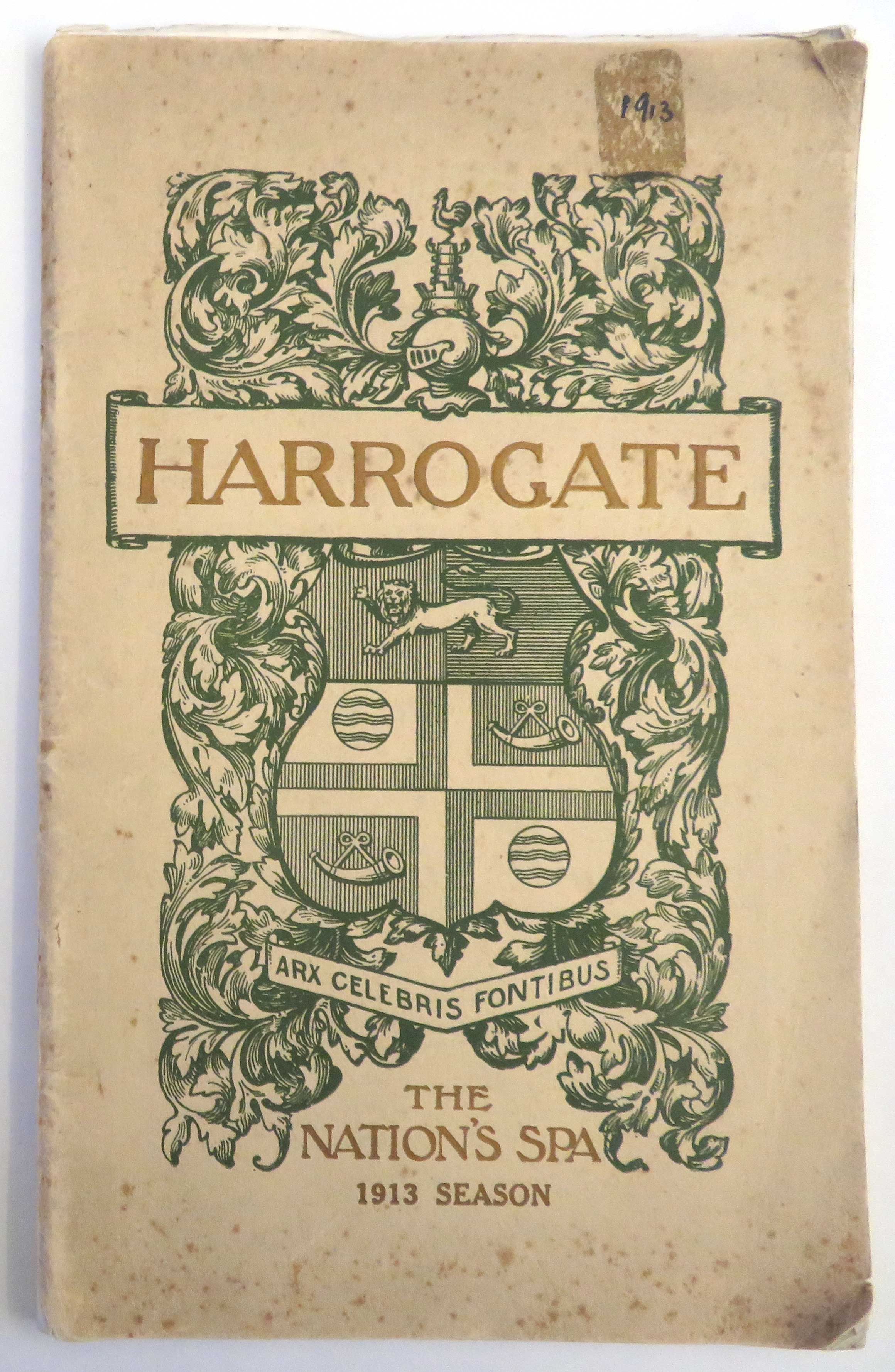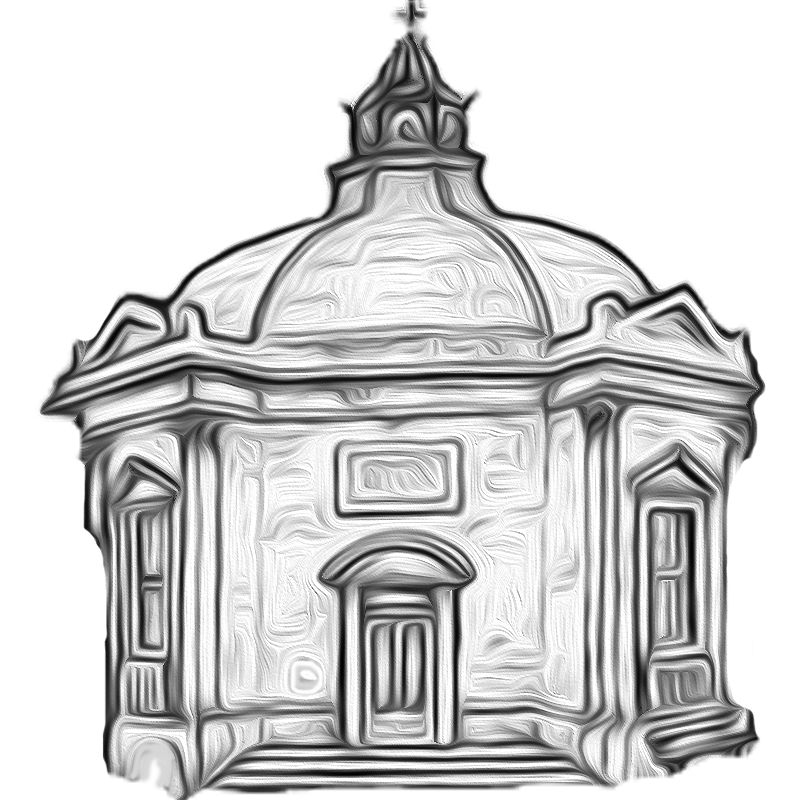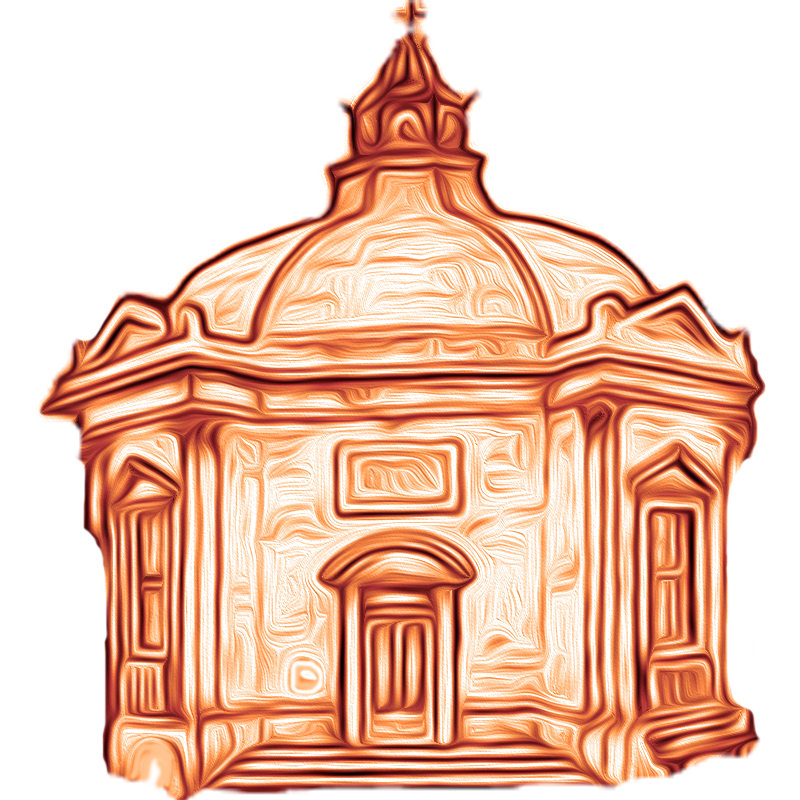Competition
In a review of Granville’s Spas of England (1841), the Spectator declared:
‘The general object of the book is highly praiseworthy;
for its effect, so far as it operates, is to call attention to the medical
virtues of our mineral springs, and, by sending patients to them, to make
persons acquainted with their own country instead of wandering abroad.’
 Harrogate Spa Guide, 1913
Harrogate Spa Guide, 1913As early as 1861 James Copland had asserted: ‘I consider Harrogate to be, as respects its air, soil, climate and mineral springs, by far the most important watering place in this country, and unequalled by any on the continent of Europe, for the diversity and curative influence of its waters, in a large number of diseases.’ And the preface to the second edition of Andrew Scott Myrtle’s Practical Observations on the Harrogate Mineral Waters (1867) insisted: ‘It cannot be too often repeated that no spa of its kind is superior to Harrogate, and that, where sulphurous waters are indicated, it is a work of supererogation to leave England in search of them.’
In
fact, though, the book did not have as much influence as the reviewer might
have hoped. Even Queen Victoria could be seen more often in Baden-Baden than in any British spa. So for much of its history, Harrogate and its advocates can be seen
as doing everything in their power to achieve said effect. Throughout the
Victorian, and into the Edwardian period, it kept working on its reputation by importing
the best examples of spa architecture, entertainment and equipment from the
continent, making it one of the most successful competitors in the field. And
the efforts paid off: By 1919, the British
Medical Journal was happy to note that whilst previously, ‘the Continental
watering places […] had taken the cream of the patients and reaped a golden
harvest’, Harrogate could now ‘claim to rival the best of the Continental spas’.
![]()

Indeed,
the call to get English spa goers to abandon the idea that ‘there are no really
potent springs in England’ and to start patronising the native spas instead, is
a recurring theme in spa publications of the Victorian era and beyond. By 1899,
Francis William Smith was sure that ‚many physicians in London and the
provinces, instead of exposing their patients to the annoyance and fatigue of
foreign travel, are very prudently recommending them to use our own mineral
springs, and it cannot be too often repeated that there is now no need for
invalids to run the risk, or undergo the inconveniences and discomforts of a
journey to the Continent, in order to drink mineral waters. We have as good
sulphur, iron, and magnesia springs in Harrogate as there are anywhere.‘ Why
then, would patients have to be ‘wearied and worried with the rush to
Baden-Baden, Homburg, and Kissingen, and the fleecing and flaying experienced
in these places‘?
![]()
![]()
![]()
Interestingly, this message was underpinned by the literary world, which had long resorted to making fun of the continental spas by reducing them to gambling dens, and of their English visitors by portraying them as hapless victims of the continental casinos: Victorian novels are full of such episodes. Charles Lever, in his Arthur O’Leary: His Wanderings and Ponderings in Many Lands (1844) has his hero despise all spa guides to Germany and sees in the German resorts little less than money-making devices. Charles Dickens uses the trope for his story ‘The Modern Robbers of the Rhine’ (1850), calling such places ‘gambling-towns’ in preference to ‘spa towns’.



Harrogate Spa advertising materials, Images © Royal Pump Room Museum, Harrogate Borough Council
Interestingly, this message was underpinned by the literary world, which had long resorted to making fun of the continental spas by reducing them to gambling dens, and of their English visitors by portraying them as hapless victims of the continental casinos: Victorian novels are full of such episodes. Charles Lever, in his Arthur O’Leary: His Wanderings and Ponderings in Many Lands (1844) has his hero despise all spa guides to Germany and sees in the German resorts little less than money-making devices. Charles Dickens uses the trope for his story ‘The Modern Robbers of the Rhine’ (1850), calling such places ‘gambling-towns’ in preference to ‘spa towns’.
 Punch Magazine, 23 July 1842
Punch Magazine, 23 July 1842And the
satirical journal Punch claimed in
1849 to have received an advertisement from Bad Homburg, addressing its
‘numerous friends in England and elsewhere’ and announcing improved Casino
facilities. Punch comments: ‘We are
afraid that the Baths of Homburg near Frankfort-on-the-Maine, savour too much
of the Maine and the Deep. We have no objection to aquatic exercise in safe
water, but had rather not indulge in rolling a roulette and sportively gambolling at trente-et-quarante, exposed to the peril of sharks. Assuredly the
Humane Society would designate the Waters of Homburg as “Dangerous”. Give us,
in preference, the straightforward bathing of the Serpentine. We suspect that
people resort to Homburg, not to improve health, but to stand the hazard of the
dice. It is to be wished that the advertisers would call the Baths by their
real name, or at least be correct in its orthography, and when next they put
their puff in the papers, change o intou in “Homburg”, and strike out the r.’
How different then, reads a eulogy of Harrogate we find in The Gentleman’s Journal of 15th November 1898: Beautifully situated, and boasting magnificent buildings, both sacred and secular, it was depicted as mercifully free of casinos and steeped instead in British history. Again: who would want to go abroad?
At about the same time, the Corporation of Harrogate began to extend the range of its advertising slogans from the neutral Harrogate for Health and Pleasure to the more specific The Queen of English Watering Places or even The Nation’s Spa: in a competition that was still ongoing, Harrogate in its heyday chose to emphasise its national credentials.

The Gentleman’s Journal
The best-known example of a British politician shunning the continental spas for Harrogate is perhaps Neville Chamberlain who repeatedly visited Harrogate in the 1930s – memorably reported in Punch, but also in the Spectator and elsewhere.

Image © Royal Pump Room Museum, Harrogate Borough Council



